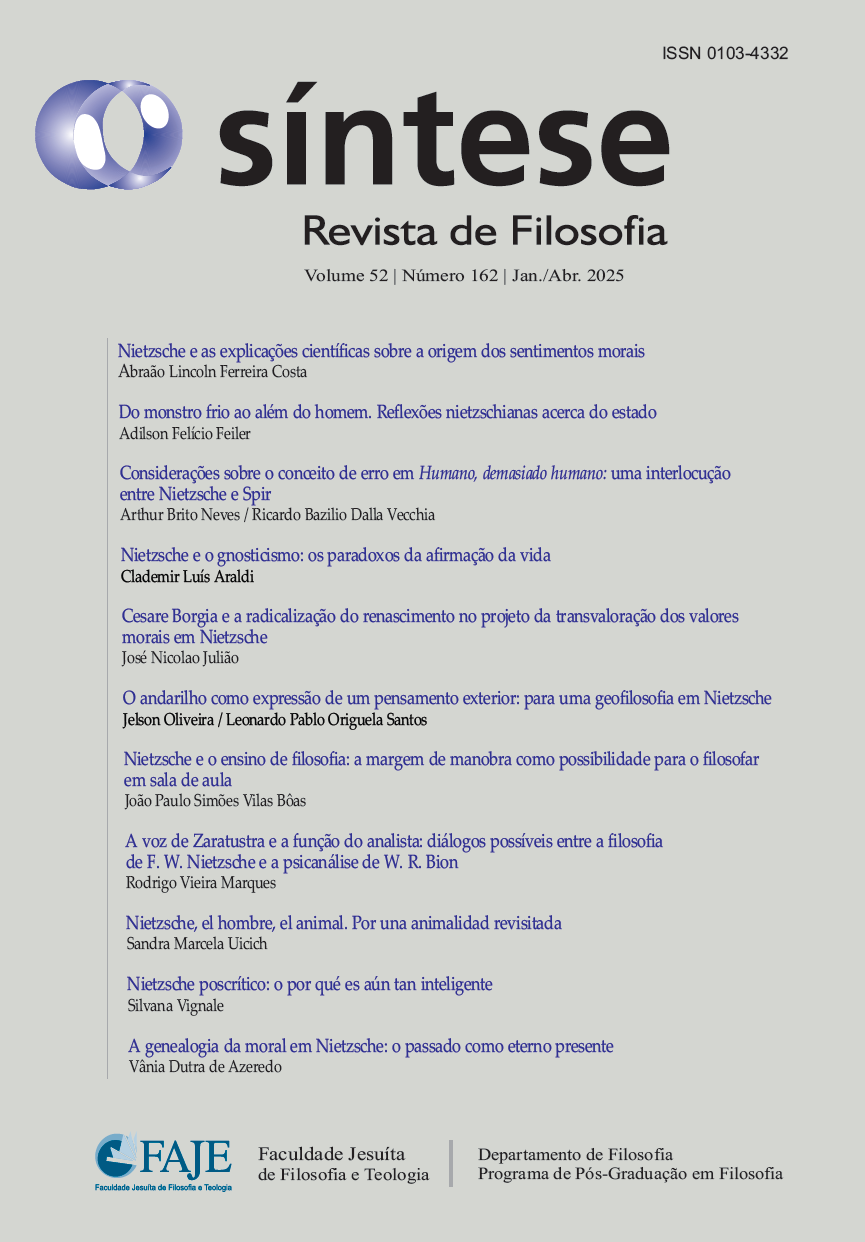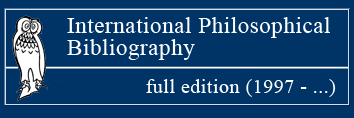THE WANDERER AS AN EXPRESSION OF AN EXTERIOR THOUGHT: TOWARDS A GEOPHILOSOPHY IN NIETZSCHE
DOI:
https://doi.org/10.20911/21769389v52n162p115/2025Abstract
This article aims to analyze the hypothesis of a geophilosophy in Nietzsche through the figure of the wanderer, understood as part of a “thought from the outside” strategy that materializes as a rejection of subjectivist and metaphysical thought. Nietzsche develops this idea particularly in works such as Human, All Too Human and Thus Spoke Zarathustra, where the wanderer represents freedom of spirit, plurality of perspectives, rejection of dogmas, and the task of creating new values. By analyzing selected passages from these texts, we demonstrate how the metaphor of the wanderer symbolizes a thought in constant motion, nourished by landscapes, impermanence, and the experiences lived across different territories shaping the wanderer’s journey. In this sense, the figure of the wanderer opposes the sedentarism of metaphysical thought, which remains anchored in universal and immutable truths. Geophilosophy (a term proposed by Deleuze and Guattari) thus emphasizes the connection between thought and the external environment, standing in contrast to the inwardness of the rationalist tradition in Western morality. Finally, we demonstrate how Zarathustra, the wanderer par excellence, embodies the courage to create and affirm life in all its contradictions, navigating between mountains and seas in search of a philosophy that dialogues with the world—one that engages with nature rather than opposing it, as is typical of the prevailing anthropocentrism. This perspective culminates in the concept of the great noon, a symbol of the highest clarity and freedom of thought, whose initial formulations appear in the final aphorism of Human, All Too Human, serving as the guiding thread of this reflection.
Keywords: Nietzsche. Geophilosophy. Wanderer. Thought from the outside. Free spirit. Zarathustra.






























